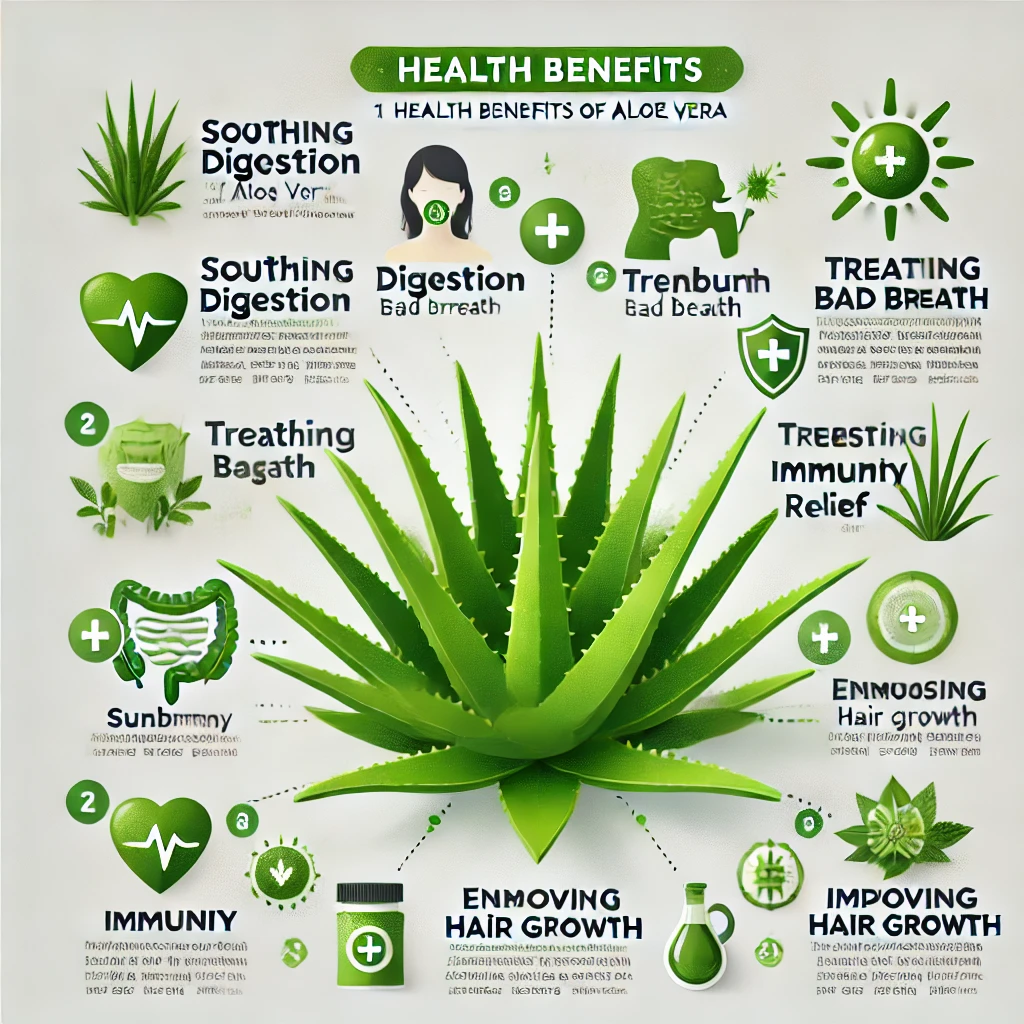Email: blogagri2@gmail.com
Exploring Aloe Vera Varieties: Benefits for Health

There’s no doubt that Aloe Vera has stood the test of time and continues to be the first choice for soothing properties. So, how do you feel about unleashing nature’s green powerhouse? Aloe vera, often hailed as a miracle plant, has been a wellness staple for centuries—and for good reason. But check this out – While A. barbadensis is the most common variety, there are over 450 types of aloe, each boasting its own array of nutritional and healing qualities.
As the normalization of advances in health branched out throughout the globe, so did the intense need for aloe varieties. Are you ready to explore the intriguing world of aloe and how it may change your health and wellness? There’s no distinction between you and someone else who wants to enhance their digestive health; aloe will take care of all your needs. So, let’s get started as I take you on this once-in-a-lifetime journey!
Introduction to Aloe Varieties and Their Benefits
Aloe Vera gel is best known for its healing properties and is widely used in many applications. While most people consider aloe to be just an aesthetic plant, it also has a lot of medicinal uses.
However, are you aware that there are several kinds of aloe species, each having its particular advantages? Soothing out sunburn and fixing digestive problems, this plant heals it all!
If you are fascinated by the various wonders of aloe or wish to treat ailments such as bad breath and skin irritation, then the world of aloe is sure to be enlightening as well as useful for you. Let us tour together as we explore the remarkable world of aloe species, understanding what makes aloe vera different from its cousins and using them in our daily lives.
What is Aloe Vera?
Aloe Vera gel is best known for its healing properties and is widely used in many applications. While most people consider aloe to be just an aesthetic plant, it also has a lot of medicinal uses.
Originating from the Arabian Peninsula, aloe vera thrives in warm climates but can adapt to various environments. Its leaf structure allows it to store water efficiently, making it drought-resistant and easy to care for.
f you are fascinated by the various wonders of aloe or wish to treat ailments such as bad breath and skin irritation, then the world of aloe is sure to be enlightening as well as useful for you. Let us tour together as we explore the remarkable world of aloe species, understanding what makes aloe vera different from its cousins and using them in our daily lives.
Different Types of Aloe Varieties
There are many varieties of aloe, and each of them has its own set of benefits.
Aloe vera is arguably the most popular form of aloe. It is known that this succulent fruit has the ability to medically treat minor skin wounds, and at the same time, its leaves are filled with healing gel.
Next is one of Aloe Vera’s cousins, Aloe Cactus. Its cactus form gives it a very spiky look, which offers a little more health benefits than its regular vine variety.
Bare root aloe is a great option if you are a gardener looking for aloe to propagate. These plants do not come in containers, which allows for easy transportation.
They also come in varieties such as bulbous leaves with bright colors or mixed shapes, which are great for an indoor garden, not only for decorating your living space but also for practical uses and benefits.
All aloe vera types have specialized qualities: some make it simple for the sick to recover, and others assist in stringent times. In such cases, you are able to rapidly locate the one that is ideal for you by trying them.
Unique Health Benefits of Aloe Vera:
Aloe is an excellent remedy for a variety of ailments, which explains its widespread use in many households. One of its particular properties is its ability to ease digestive distress. A comfortable stomach and fostered digestion are promoted by the gel that is extracted from the leaves.
On the other hand, it is also used for the removal of bad breath. Since aloe vera contains antibacterial properties, it removes odorous bacteria and makes someone fresher after a mouthwash.

In the following sections health benefits of Aloe Vera are Discussed in Detail:
Sunburns
Aloe’s efficacy in the treatment of sunburns is remarkable. The immediate cooling action ameliorates the affected area while aiding in the repair of the skin.
Apart from these applications, aloe is rich in vitamins and antioxidants that enhance the immune system to fight colds and prevent getting sick in the cold season.
If hair growth is a problem, then this succulent has something for you, too. Scalp massage with aloe enhances the follicles and facilitates the growth of thicker hair.
Last but not least, its ability to enhance skin health is by far its most popular benefit; it makes dry skin come back to life easily and moisturizes it at the same time.
Soothing Digestive Issues
Aloe vera is highly praised owing to its soothing features, particularly in the case of digestives. The gel from its leaf contains compounds that help digest sugars and fats. This greatly aids the stomach.
Aloe vera juice is also taken by people as a remedy for acid reflux or bloating. It has anti-inflammatory properties that prevent the gastric lining from being disturbed.
Aloe vera also serves as a laxative, which is believed to aid in bowel movement when used regularly without the common side effects associated with nonprescription medications.
If you tend to have digestive problems such as irritable bowel syndrome (IBS), making aloe a part of your daily diet could be of great value. It not only encourages gut health but also promotes overall health, as well as effectively regulates the digestive system.
Treating Bad Breath
Halitosis or bad breath is also a common issue and very unpleasant. You can, to some extent, benefit from aloe vera because it certainly isn’t the easiest of things to deal with. This all-purpose plant possesses antibacterial abilities that prevent the foul odor of the mouth caused by oral bacteria.
When drunk or used as a mouthwash, aloe vera almost inhibits the formation of plaques on the teeth and ensures that bad breath does not bother you. Its gel enriches the gums and cures inflammation as well, as it hydrates the gums.
Chowdhury, B. R., Garai, A., Deb, M., & Bhattacharya, S. (2013) claimed that raw aloe vera gel left overnight in your mouth prevents tooth decay. Since it helps the body stay hydrated, the plant enhances oral health, and throat infections can cause bad breath. Ordinary gel, when mixed with water, can cure stinking or pyorrhea as it has mechanical components that can dislodge bacteria or food debris trapped in the gums and teeth. Another claim is that a gel milk dish assists in cutting down bacteria in the mouth and thus reducing tooth decay.
Sunburn Relief
Athe active enzymes in aloe vera aid in the digestion process. With an enhanced digestive system, there will usually be fewer food particles in the mouth that can cause fetor, hence reducing it.
To use aloe vera to manage bad breath, one has to prepare a mixture of raw aloe vera gel and water and use it as a gargle. Your smile will not just be brighter, but it will smell better, too! Adding one more layer to the daily oral hygiene practice is this natural, unflavoured, and non-harmful method of treating bad breath.
Whether you have a set skin-care routine or enjoy using easy remedies, adding aloe to your after-sun care can work wonders on hot summer afternoons.
Aloe vera is famous for its numerous health benefits, one of them being the huge enhancement that it provides to the human immune system. Due to its wide array of vitamins, minerals, and antioxidants, it facilitates the management of oxidative stress within the human body.
Consistent intake of aloe vera can improve the body’s defense systems against pathogens and other forms of infections. Its gel is rich in polysaccharides, which promote the production of white blood cells, which are essential in the elimination of pathogens.
On the other hand, the anti-inflammatory properties of aloe contribute to the general health of the body. It achieves this by minimizing inflammation in the body, which allows for reliable and safe immune responses.
If you consume aloe vera juice or apply it as a gel on your skin, you are likely to observe that your ability to resist diseases improves. Aloe can be eaten, made into juice, or put on the skin as a gel; whether it’s the skin of your mouth or used on your skin, aloe is meant to increase resilience to diseases.
Encouraging Hair Growth
AAloe vera is regarded as a magic plant when it comes to stimulating the growth of hair. The gel obtained from the leaves has minerals and vitamins that ensure the scalp is well nourished and also assists in strengthening the hair follicles.
Few people think that consistent application of aloe vera can considerably reduce hair loss and even improve hair thickness. It also assists in moisturizing the scalp, which in turn reduces hair loss as dryness is the leading cause.
Furthermore, due to its anti-inflammatory characteristics, it can relieve irritation and help in improving circulation in the scalp. Because nutrients are delivered to the roots through blood flow, increasing blood circulation might help a person’s increasing tendency to grow stronger.
You can make sure it is very easy to include aloe vera in your hair care routine. It can be applied alone or in conjunction with other natural oils, which offer greater benefits. This easy plant could be exactly what you are looking for to have beautiful hair, whether it is straight or curly.
Improving Skin Health
Aloe vera is a master of skin health. From its gel, one can extract vitamins, minerals, and antioxidants that will help in nourishing the skin.
Aloe can be used directly on dry areas and is a great treatment for dry and itchy skin, as it will moisturize without causing irritation. It helps to reduce redness and inflammation, resulting in less irritation.
Aloe vera might be able to help with acne as it contains antibacterial properties. It does help in controlling excessive oil without removing moisture.
Nothing can come close to the cooling effect of aloe for treating sunburns. It will relieve the pain of burns and aid in the more rapid healing of injured skin.
According to studies, consistent utilization of aloe vera might accelerate the formation of collagen, and in due course, your skin will be holding together much better than before, and the symptoms of ageing will be hidden. By the time you reach a certain age, your skin will start feeling smooth and lustrous.
So, once again, it must be pointed out that there are a wide variety of benefits of using the lotion that are provided with sight application while improving the texture of the skin.
Common Diseases in Aloe Plants and How to Treat Them
Even though aloe vera, as a flowering plant, is quite durable, it doesn’t mean that it is immune to a variety of diseases. Perhaps it is most important to say that a relatively common disease, root rot, is usually caused by overwatering aloe Vera. If you find your aloe vera plants with roots that appear soggy and brown, then you should take action immediately. Simply take the plant out of its pot, cut off all the rotten roots, and place it back in fresh soil.
You might also worry about aphids or mealybugs, which are pests. These little monsters live on leaves and sap and sap aloes, resulting in leaves reduced in growth and becoming yellow. Use plain water mixed with soap and spray it on the infected area to help with this.
If your aloe looks to have brown tips or it is drooping a lot, it might be sitting in the wrong position, or you might be either over or under-watering it, which is making it stressed. Move it slightly away from the original position, and don’t water it too frequently for proper recovery!
How to Care for Your Aloe Plant:
Aloe plants require care and attention to remain healthy and live long. Let’s start green by watering… make sure that the soil is completely dry on the next watering. The soil you will need a well-draining soil mix specifically made for cacti and succulent plants.
Once during Spring and Summer, water with cactus fertilizer is diluted, and it works best. Aloe should also be exposed to sunlight for a certain amount of time. .
Always make sure the basics are taken care of and that the plants are healthy and beneficial. These points are discussed in detail:
Watering Tips
One crucial aspect to note while caring for an aloe plant is its water requirement. Aloe plants flourish in neglect, allowing for a decrease in care provided to them.
Before initiating the aloe watering process, check for the dampness of the soil. Insert your finger in the potting mix, approximately an inch deep; if the mix is dry, then it means you need to hydrate. If it is still wet, let it sit for a few more days.
To make sure that you do not scorch the roots, ensure that you use room-temperature water. It is also ideal for watering infrequently; however, when you do, make sure to water the plant deeply while also allowing the excess water to drain out to avoid any root rot.
Also, note that the winter months will require you to water the aloe plant significantly less since it goes through a dormant phase during that time.
Always keep in mind that every variety is different and may have different needs!
Be cautious of yellow leaves, as they may indicate overwatering.
Soil Requirements
When it comes to planting an Aloe Vera plant, the soil must always be well-draining, which ensures that water doesn’t gather around the roots and that it doesn’t lead to rot. The ideal mix that can be used is for cacti and succulents.
You may also use perlite or coarse sand to improve the drainage even more, such components will assist in retaining moisture while simultaneously ensuring that the aloe roots stay healthy.
The pH of the soil should, naturally, be within the parameters of 6.0 to 8.0, as slight acidity to neutrality is the ideal condition for Aloe Vera and Aloe Cactus to grow and thrive.
Avoid using heavy soils with elevated water retention, as they can become an environment for pests and diseases to grow. that resulting in stronger repercussions for your aloe plant in the long run.
If you frequently assess the quality of the soil of your plant. It will ensure that your plant stays healthy and you can grow the pups that you have always wanted to!
Fertilizing Techniques
If you are looking to have your aloe vera plants grow properly, then it is crucial for you to apply fertilizers to them as they will ensure healthy plant growth. The right nutrients tend to make them more resistant and healthier.
It is recommended to use a water-soluble fertilizer that is cacti or succulent-specific. These types of fertilizers tend to have lower nitrogen content, which is great for hardy plants.
During the growing season, waiting from spring to early summer, the fertilizer should be used. This is to ensure that your aloe takes in the nutrients at the correct time.
To avoid burning the roots, the fertilizer needs to be mixed with water, preferably at half strength, before application. Aloe roots are very tender, so a light approach is always the best.
For people looking for alternatives, consider fish emulsion or compost tea. They release nutrients slowly and don’t put great stress on the plant as a whole.
Always analyze the reactions of your aloe to fertilization, as this will guide you to the right approach. This way, over time, the chlorophyll-aloe will improve!
Proper Sunlight Exposure
The ideal conditions for the growth of Aloe vera are the strong but indirect lights of the sun. A placement near a sunny window is considered the best in this regard.
Too much exposure to the sun can have adverse effects. Sunburned spots or even the leaves turning brown in color may occur. For the aloe plant, filtered light is required, and the optimum target is during the peak hours of the day.
If you are keeping the aloe outdoors, try to provide partial shade during the hottest parts of the day. This prevents excess stress on the plant and helps to maintain moisture levels in the best range.
Every now and then, rotate your aloe to ensure all sides of the plant get exposure. This approach promotes equal growth of the plant and prevents it from growing only towards one side.
It is advisable that you always keep a close eye on how your plant responds to the light you provide. If you experience yellowing of leaves or stagnant growth. In this case check the areas where you have planted them to see if there is enough sunlight.
Creative Ways to Use Aloe Vera
Aloe vera is an extremely valuable plant, as it belongs to both health and creative industries. It is common knowledge that aloe vera gel is one of the best natural moisturizers around. You can apply it directly onto your skin or mix it with essential oils for hydrated skin.
Looking to spice up your beauty routine? Try mixing aloe vera gel with other ingredients like honey and oatmeal. To create homemade face masks for soothing sensitive skin or brightening/clarifying your skin. The mix is gentle enough to be used by people suffering from acne-prone skin.
In the kitchen, unused aloe vera leaves can be used in smoothies. The taste is mild and does not overpower the other ingredients. This drink is said to stimulate appetite and protect the body. A very good and healthy habit.
If you enjoy gardening, then why not create sections of curio with different types of aloe? Aloe cactus, alongside ordinary aloe vera, not only serves decorative purposes but also helps purify the air in the house.
Aloe-scented DIY candles would be an interesting project for you to undertake.
Applying powdered dried aloe leaves in cooking or herbal supplementation would also assist in further well-being. The powdered aloe leaves are beneficial to your overall self when used in moderation.
The above concepts illustrate how versatile this plant can be for skincare and cooking, as seen in Aloe Vera. There are endless avenues to explore with every variety of aloe.







